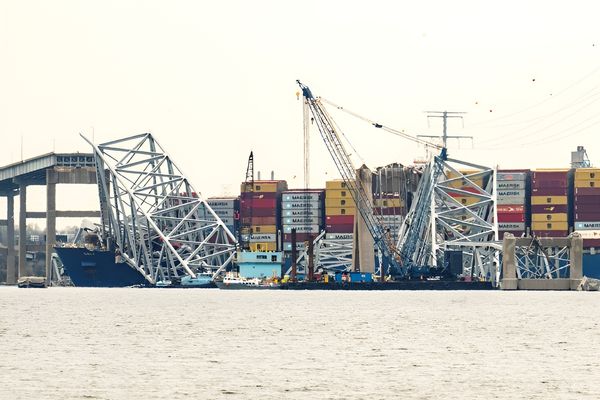Not all markets are created equal. While you may have a logical stop based on a stock chart, you might need to adjust how much risk you are willing to take for your portfolio. Dell shows how we made that adjustment as the market fell into a correction.
Dell Held Gains Better Than Most
As market indexes corrected at the beginning of April we shifted our exposure on SwingTrader to try to stay on the right side of the trend. Dell Technologies had a very different look from the indexes.
After its last earnings report, Dell gapped up for gains of more than 30% (1). Even better, it held the majority of the gains. It retraced roughly 50% of that week's gains but found support at its rising 21-day moving average line (2). Just a few weeks later it was back at highs (3).
As the market started pulling back, Dell lost ground too. But while the Nasdaq composite and S&P 500 sliced through their 50-day moving average lines, Dell found support again at its 21-day line (4). Plus, the pullback to the line gave up less ground this time. It was a 20% pullback after the earnings gap and only 15% from the recent high this time.
We had low exposure and so we took the chance on Dell's upside reversal at a logical support area. Our entry was at 120.23 and our stop was set at the low of the day, at 115.68. That was just a 3.8% risk for the trade.
The Difference Between Trade Risk And Portfolio Risk
But the market's position underneath the 50-day moving average gave us reason to pause. A full 10% position would translate to a 0.4% risk to a portfolio. Instead, we reduced our position size to a quarter position, or a 2.5% portfolio weight. That made the portfolio risk less than 0.1%.
Of course there is a flip side. If the market turned around strongly, then a 2.5% position isn't going to move the needle very much. The solution? We can always add to a position if the market gives us feedback that we made a good decision.
Market Wizard Tom Basso shares his thoughts on position sizing in this "Investing With IBD" podcast
Dell initially made some progress but then reversed back below our entry the next day (5). The weakening market continued to put pressure on Dell, and within two days of our entry the reversal failed (6). We cut our loss early at 116.82. The quarter position made the small loss even less of an effect on the model portfolio performance as a result.
The SwingTrader product has a tally of all the trades, good and bad, since its 2016 inception. So how do we communicate the end result of the trade?
With a full position size, the math is easy: Whatever the trade did is the percentage gain or loss shown. But for everything else, we adjust the percentage to reflect the position size. Instead of a 2.8% loss, the adjustment shows only a quarter of that loss at 0.7%. We still give the actual numbers in the trade setup for full transparency, but the position size adjustment is so important, and that's what we want users to take away from the trade.
Is it unfair to show a smaller loss? We apply the same rules when we have a winning trade. A great trade will get a similar adjustment lower if we had less than a full position. The adjustment affects both gains and losses without prejudice. The end result is we communicate to our users that position size matters.
More details on past trades are accessible to subscribers and trialists to SwingTrader. Free trials are available. Follow Nielsen on X, formerly known as Twitter, at @IBD_JNielsen.







